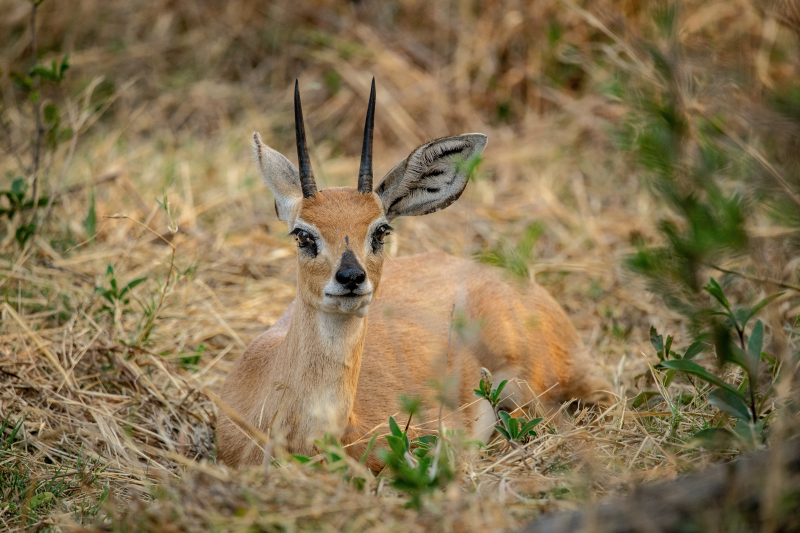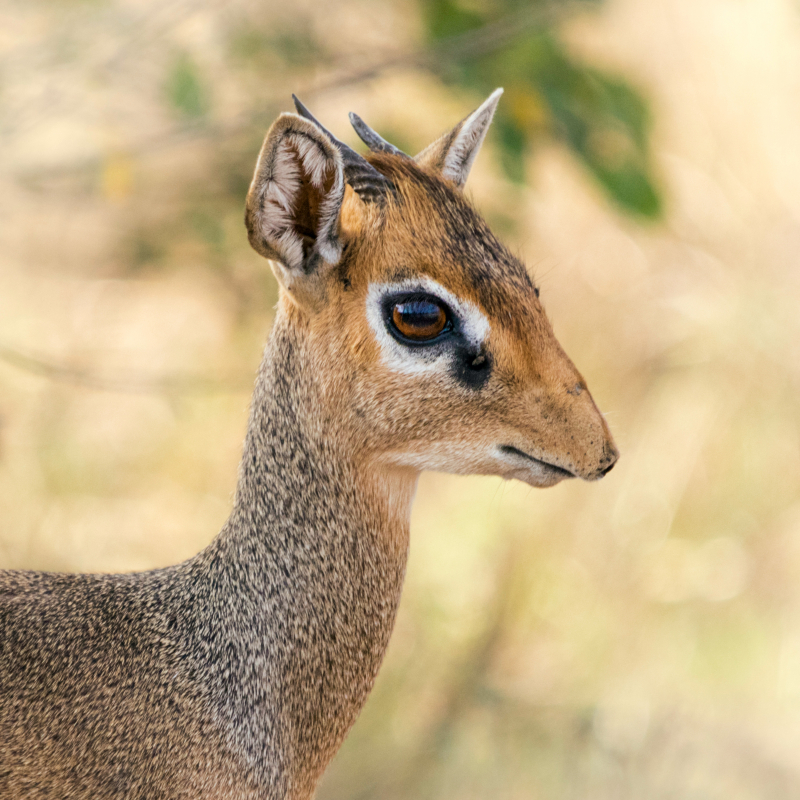Dik Dik
The dik-dik, a petite and charming antelope species belonging to the family Bovidae, is renowned for its diminutive size, distinctive appearance, and elusive nature. Found in diverse habitats across Eastern and Southern Africa, these small ungulates are not only captivating to observe but also play a vital role in the ecosystems they inhabit.
There are several species of dik-dik, with the Kirk's dik-dik (Madoqua kirkii) being one of the most well-known. Adult dik-diks stand at a mere 12 to 16 inches at the shoulder, making them one of the smallest antelope species. They are characterized by a compact build, large eyes, and a pointed snout. The name "dik-dik" is derived from the sound they make when alarmed, a high-pitched whistling noise.
Dik-diks are adapted to a life of evasion and concealment. Their small size allows them to navigate through dense vegetation, and they are well-known for their agility and speed. When threatened, dik-diks rely on their sharp senses, including keen eyesight and acute hearing, to detect predators such as lions, cheetahs, and birds of prey. Their cryptic coloration, a combination of grays, browns, and reddish hues, provides effective camouflage in their natural habitats.
These herbivores primarily feed on a diet of leaves, shoots, fruits, and flowers. They are selective browsers, choosing a variety of plant species for their nutritional needs. Dik-diks have also evolved to extract moisture from the food they consume, allowing them to survive in arid and semi-arid environments where water sources may be limited.
Dik-diks are known for their monogamous mating habits, forming lifelong bonds with a single mate. These pairs establish territories, marking them with preorbital gland secretions and dung middens. Their territories are defended vigorously, and the pair communicates using various vocalizations, including the distinctive alarm whistle that gives them their name.
Female dik-diks give birth to single offspring after a gestation period of around five to six months. The young dik-dik, known as a fawn, quickly becomes mobile and follows its parents, learning essential survival skills. The family unit remains cohesive, contributing to the social structure of these small antelopes.

















